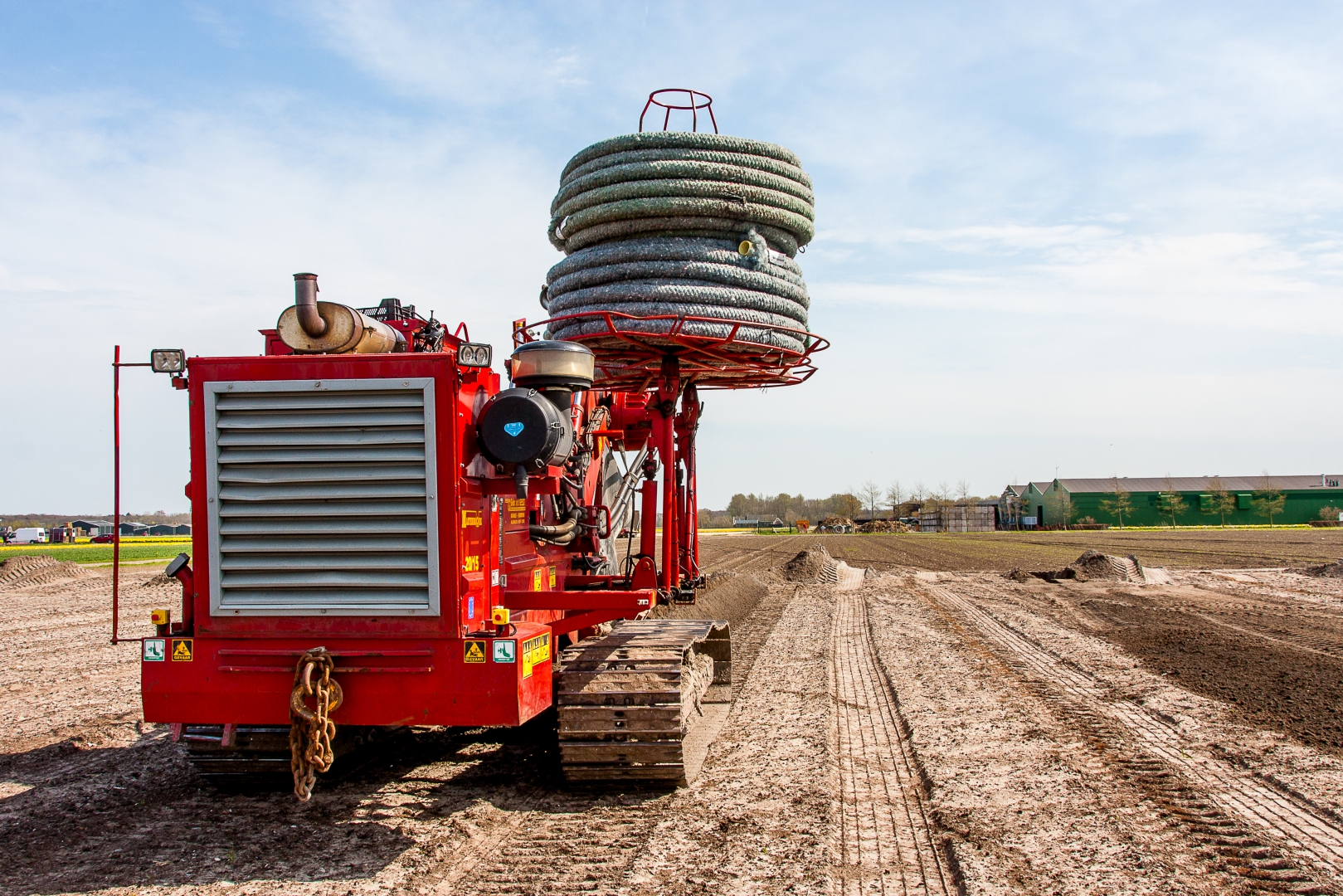-

-
Zoek met minimaal 3 karakters
- Login
-
- Your shopping cart is empty
change basket - Webshop
OUR NEWS & socials
First bulb grower to use ironsand
18-07-2018

At the moment we are already working hard on the preparations for the coming planting season at the nursery. In April, the first part of the plot was provided with new drainage with ironsand, and now a second part is being provided with this new form of drainage.
The drainage ensures soil improvement and the correct water level of the field, the ironsand ensures good water quality of the ditches around the field.
What is ironsand?
Ironsand consists of sand with a layer of iron oxide. It is created during the extraction of drinking water. The layer of iron oxide binds phosphate.
Bulbs are cultivated on sandy soil in the Bulb Area. Because of this soil type, nutrients (phosphate) are easily flushed out to the ditches around the bulb fields. By discharging drainage water through a filter with ironsand, approximately 90% less phosphate will end up into the ditch. Among other things, phosphate causes too little biodiversity in the ditches around bulb plots. For example, phosphate can lead to formation of blue algae.
Thanks to this new form of drainage, we continue to contribute to biodiversity at our nursery.
The drainage ensures soil improvement and the correct water level of the field, the ironsand ensures good water quality of the ditches around the field.
What is ironsand?
Ironsand consists of sand with a layer of iron oxide. It is created during the extraction of drinking water. The layer of iron oxide binds phosphate.
Bulbs are cultivated on sandy soil in the Bulb Area. Because of this soil type, nutrients (phosphate) are easily flushed out to the ditches around the bulb fields. By discharging drainage water through a filter with ironsand, approximately 90% less phosphate will end up into the ditch. Among other things, phosphate causes too little biodiversity in the ditches around bulb plots. For example, phosphate can lead to formation of blue algae.
Thanks to this new form of drainage, we continue to contribute to biodiversity at our nursery.















